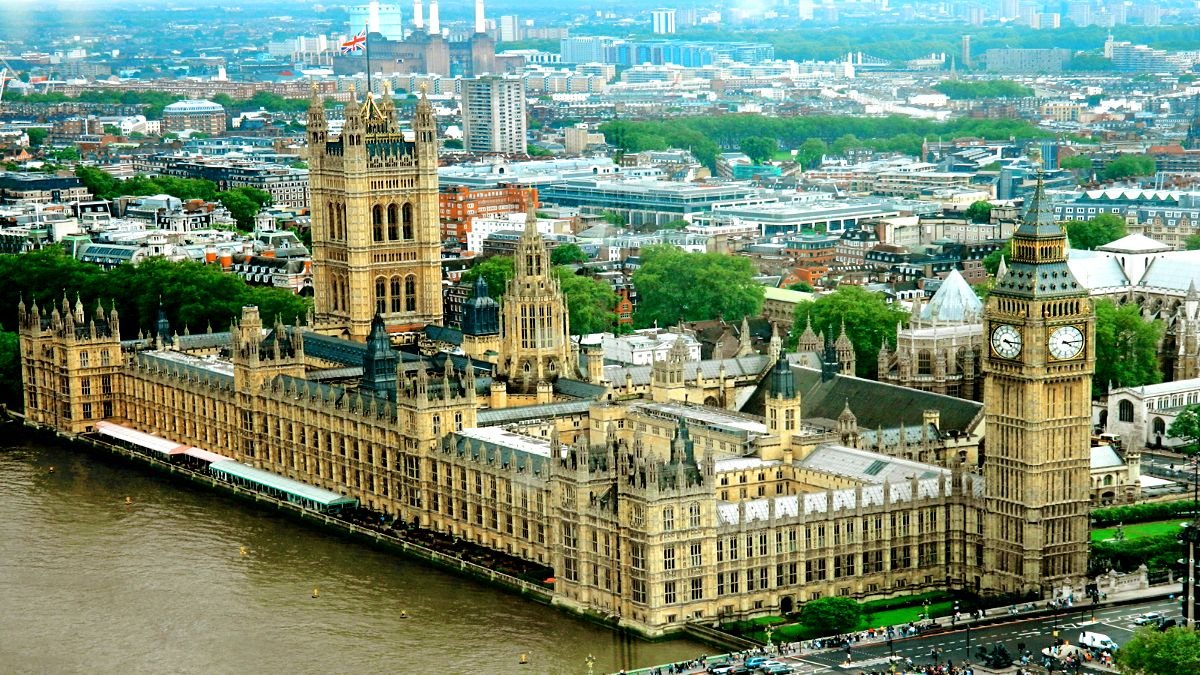Overview:
The United Kingdom, made up of England, Scotland, Wales, and Northern Ireland, is a country that effortlessly blends historic charm with modern dynamism.
From medieval castles and quaint countryside villages to bustling cities and picturesque coastlines, the UK offers a wide variety of experiences for travelers.
Whether you’re exploring the ancient ruins of Stonehenge or soaking in the cultural vibrancy of London, the UK’s diverse landscapes and rich history make it a destination worth visiting.
In this blog, we will delve into the 15 best places to visit in U.K. (United Kingdom).
Table of Contents
1. The Tower of London, London
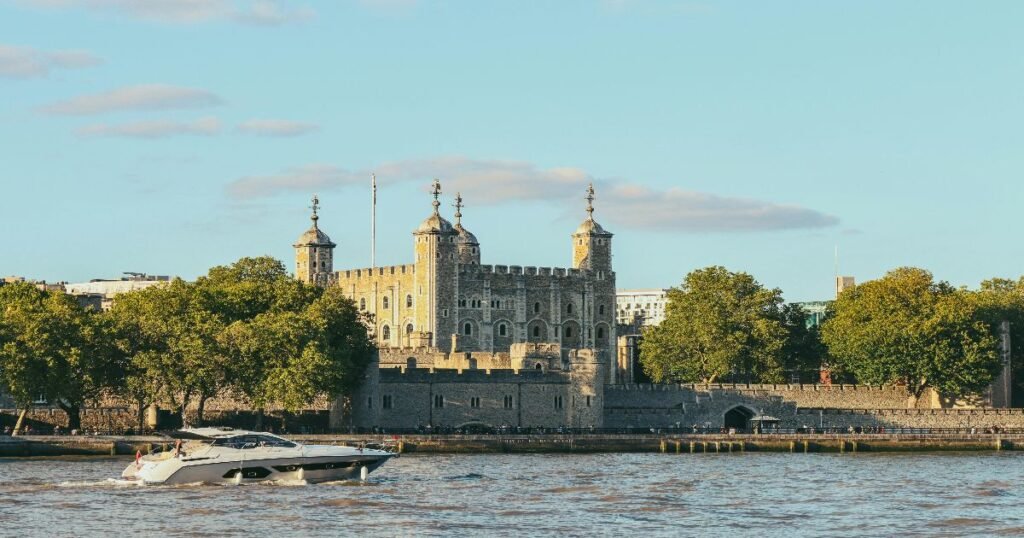
A historic fortress located on the banks of the River Thames, the Tower of London is a symbol of the city’s royal past. Founded by William the Conqueror in 1066, the Tower has served as a royal palace, prison, and treasury.
Historical and Cultural Significance: The Tower of London is home to the Crown Jewels, which include some of the most famous and precious pieces of the British monarchy.
Unique Features: Visitors can explore the White Tower, see the ravens that guard the tower, and learn about its intriguing history through interactive exhibitions.
Best Time to Visit: Visit during spring (March to May) or fall (September to November) for pleasant weather and fewer crowds.
Travel Tips:
- Transportation: The Tower of London is easily accessible via the London Underground. Tower Hill station is the nearest stop.
- Accommodation: Stay in the nearby areas of South Bank or the City of London for easy access to other major attractions.
- Local Customs: Visitors should remain respectful in the Chapel of St. Peter ad Vincula and follow the guidelines of the Beefeaters.
2. Stonehenge, Wiltshire
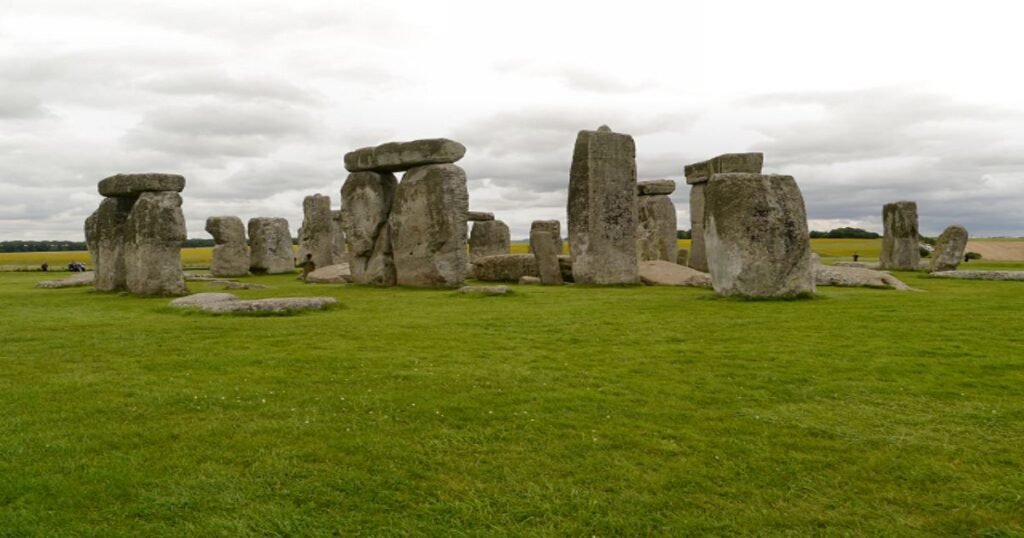
Stonehenge is one of the world’s most famous prehistoric monuments, shrouded in mystery and wonder. The ancient stone circle is located on Salisbury Plain and has been a place of pilgrimage, ritual, and scientific inquiry for centuries.
Historical and Cultural Significance: Dating back over 4,500 years, Stonehenge is a testament to the engineering prowess and spiritual beliefs of its creators. It is a UNESCO World Heritage Site and a symbol of ancient Britain.
Unique Features: The massive stones, some of which were transported from Wales, form a circular arrangement that aligns with the movements of the sun during solstices.
Best Time to Visit: Visit during the summer solstice in June for a unique experience when the sun rises directly above the Heel Stone.
Travel Tips:
- Transportation: Stonehenge is best reached by car or guided tour from London or nearby towns like Salisbury.
- Accommodation: Consider staying in Salisbury or Amesbury for a range of accommodations from cozy inns to modern hotels.
- Local Customs: Respect the site’s ancient heritage by not touching the stones and staying on the designated pathways.
3. Edinburgh Castle, Edinburgh

Perched on Castle Rock, Edinburgh Castle dominates the skyline of Scotland’s capital city. This iconic fortress has witnessed countless historical events and offers panoramic views of Edinburgh and beyond.
Historical and Cultural Significance: The castle has been a royal residence, military stronghold, and symbol of Scottish power for over 1,000 years.
Unique Features: Don’t miss the One O’Clock Gun, fired every day (except Sundays) as a time signal for the city. Explore the Great Hall and St. Margaret’s Chapel, the oldest building in Edinburgh.
Best Time to Visit: The best time to visit is during the Edinburgh Festival in August or the spring months when the weather is mild.
Travel Tips:
- Transportation: The castle is within walking distance from most parts of Edinburgh. Waverley Station is the nearest train station.
- Accommodation: Stay in the Old Town or New Town of Edinburgh to be close to the castle and other attractions.
- Local Customs: Join in the storytelling tours led by guides in traditional Scottish attire to gain deeper insights into the castle’s history.
4. The Lake District, Cumbria
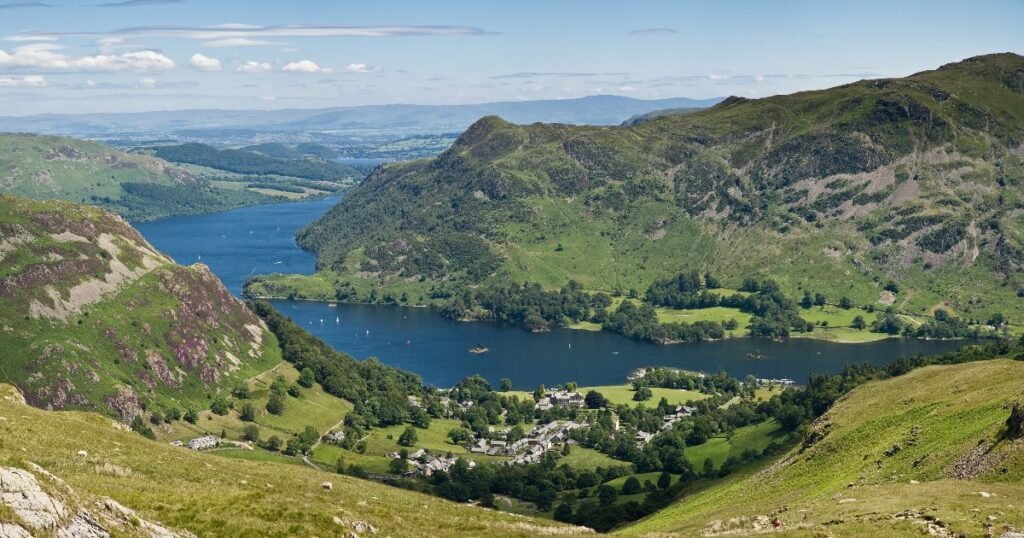
The Lake District, a UNESCO World Heritage Site, is renowned for its stunning lakes, rolling hills, and quaint villages. It has inspired many writers and poets, including William Wordsworth.
Historical and Cultural Significance: The region has a deep literary heritage, with landmarks such as Dove Cottage, where Wordsworth wrote some of his most famous poems, and Hill Top, the home of Beatrix Potter.
Unique Features: Explore the picturesque lakes of Windermere and Ullswater, hike the scenic trails, or take a leisurely boat ride on one of the many lakes.
Best Time to Visit: Visit during spring or early autumn for vibrant colors and fewer visitors.
Travel Tips:
- Transportation: The Lake District is accessible by train to Windermere or Penrith, with local buses connecting the towns and villages.
- Accommodation: Stay in lakeside towns like Ambleside or Keswick for a range of hotels, guesthouses, and bed-and-breakfasts.
- Local Customs: Respect the countryside by following the “Leave No Trace” principle. Stick to designated paths and avoid disturbing wildlife.
5. Big Ben and the Houses of Parliament, London
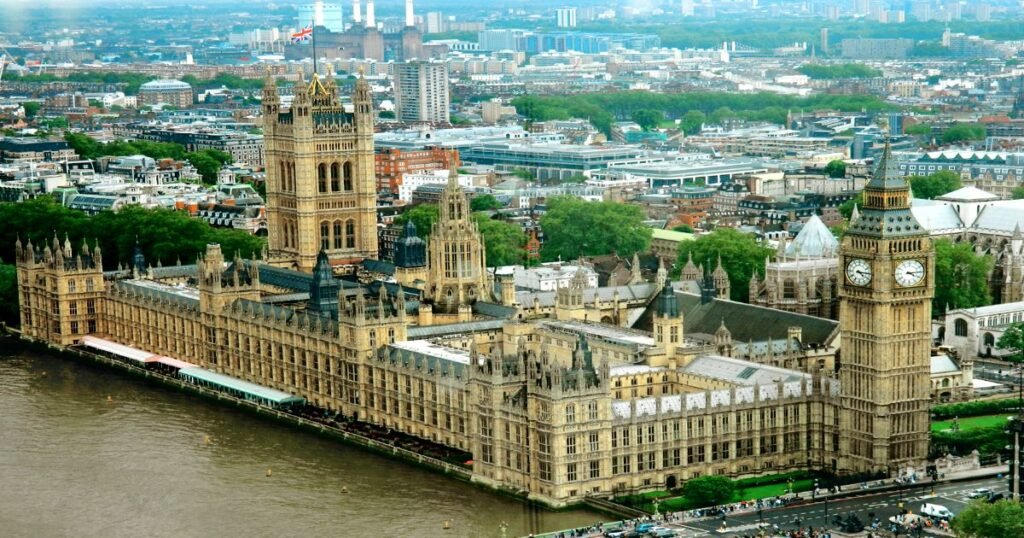
Big Ben and the Houses of Parliament are iconic symbols of the United Kingdom’s democratic heritage. Located on the banks of the River Thames, these landmarks are central to London’s identity.
Historical and Cultural Significance: The Houses of Parliament, also known as the Palace of Westminster, is the seat of the British government and has been the site of many important events in the country’s history.
Unique Features: Admire the stunning Gothic Revival architecture of the palace and take a guided tour to learn about the workings of the British Parliament.
Best Time to Visit: Visit in the early morning or late evening to see Big Ben illuminated against the London skyline.
Travel Tips:
- Transportation: The nearest tube station is Westminster, which has easy access to other London attractions.
- Accommodation: Stay in Westminster or South Bank for convenient access to major landmarks.
- Local Customs: Photography inside the Houses of Parliament is not allowed in certain areas. Dress modestly and be respectful during guided tours.
6. Bath, Somerset
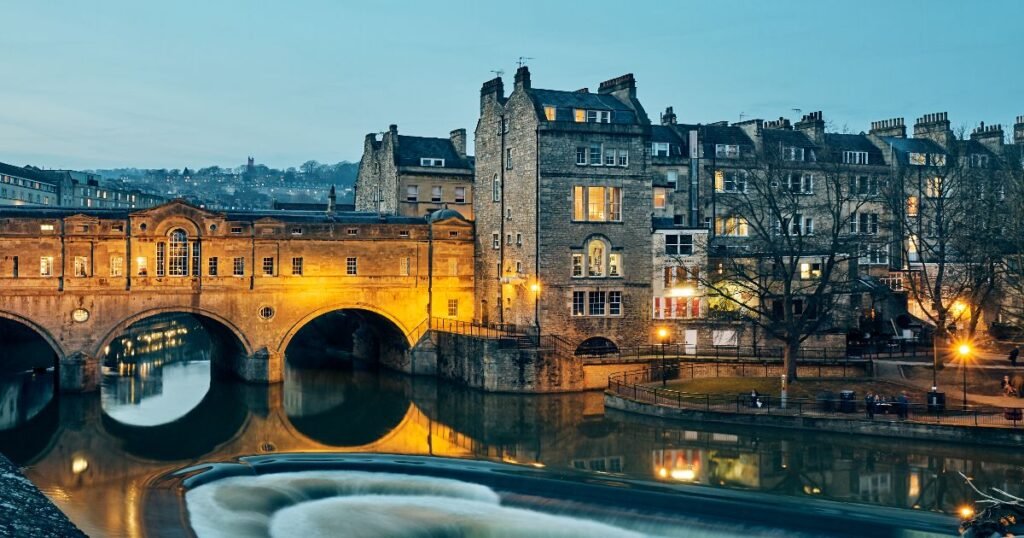
The city of Bath is renowned for its natural hot springs and beautifully preserved Georgian architecture. Founded by the Romans as a thermal spa, Bath is now a UNESCO World Heritage Site.
Historical and Cultural Significance: The Roman Baths, which date back to around 70 AD, are some of the best-preserved Roman remains in the world. In the 18th century, Bath became a fashionable retreat, drawing aristocrats and royalty alike.
Unique Features: The city’s honey-colored Bath stone buildings and sweeping crescents exude old-world charm.
Best Time to Visit: Visit between March and May or September and November to enjoy mild weather and fewer crowds.
Travel Tips:
- Transportation: Bath is a 90-minute train ride from London’s Paddington Station. Local buses and taxis are convenient for getting around the city.
- Accommodation: Bath has a wide range of options, from historic inns to modern hotels. Consider staying in a Georgian townhouse for a unique experience.
- Local Customs: It is customary to be respectful when visiting Bath Abbey and to follow the guidelines when exploring the Roman Baths. Make sure to book spa sessions in advance during peak seasons.
7. Cambridge University and the River Cam, Cambridge
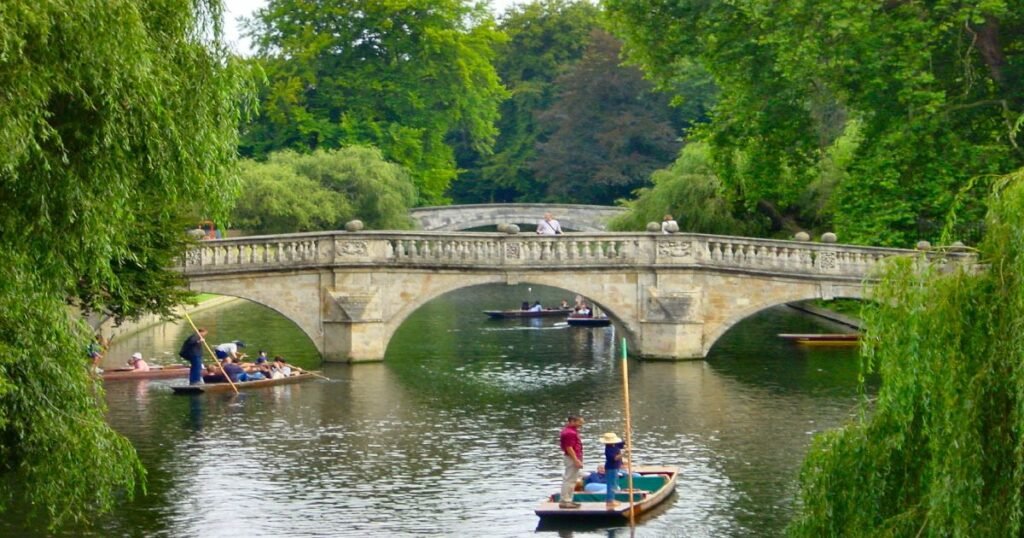
Cambridge is synonymous with its prestigious university, which has nurtured some of the world’s greatest minds, including Isaac Newton and Stephen Hawking.
Historical and Cultural Significance: Founded in 1209, the University of Cambridge is one of the oldest and most respected educational institutions in the world.
Unique Features: Take a guided tour of the university’s colleges, visit the renowned King’s College Chapel, or enjoy a leisurely punt on the River Cam for quintessential Cambridge experiences.
Best Time to Visit: Visit in spring or early autumn for pleasant weather and the opportunity to see the gardens in full bloom.
Travel Tips:
- Transportation: Cambridge is an hour away from London by train. The city is compact and best explored on foot or by bicycle.
- Accommodation: There are numerous boutique hotels, bed-and-breakfasts, and university accommodations available to visitors.
- Local Customs: During term time, some college areas may be closed to tourists. Be respectful of students and academic activities when visiting.
8. York Minster, York
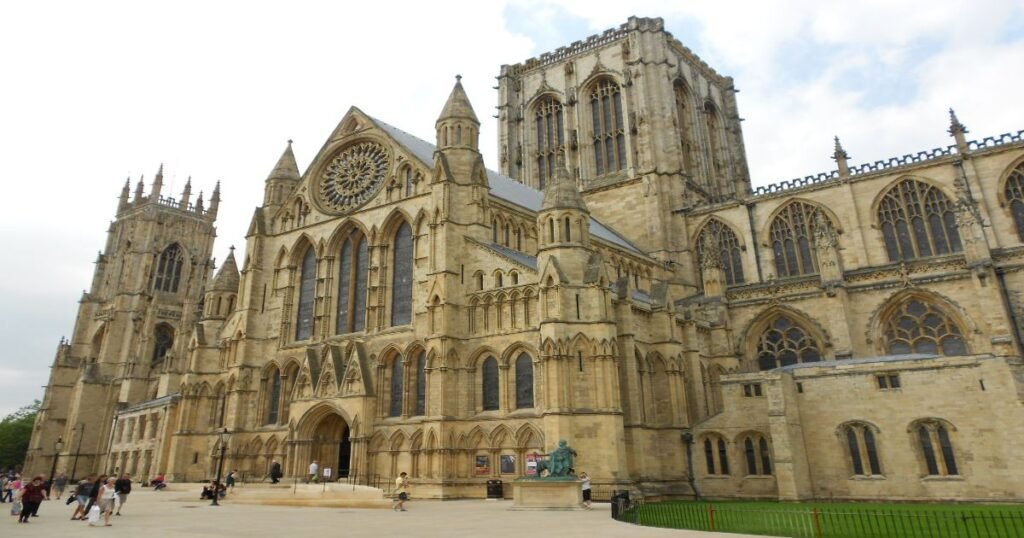
York Minster is one of the largest and most beautiful Gothic cathedrals in Northern Europe. Located in the historic city of York, this stunning cathedral is a symbol of the city’s rich medieval heritage.
Historical and Cultural Significance: Construction of York Minster began in 1220 and took over 250 years to complete. It has been the site of many significant events in British history and is famous for its medieval stained glass windows, including the Great East Window, the largest expanse of medieval glass in the world.
Unique Features: Climb the central tower for panoramic views of York, explore the crypt and the remains of the original Norman cathedral, or marvel at the intricate stone carvings and stained glass.
Best Time to Visit: Visit during the quieter months of March or October to avoid large crowds.
Travel Tips:
- Transportation: York is easily accessible by train from London, Edinburgh, and Manchester. The city center is pedestrian-friendly.
- Accommodation: Stay in one of York’s historic inns or boutique hotels within walking distance of the Minster.
- Local Customs: Respect the sanctity of the Minster during services and be mindful when taking photographs. Guided tours provide deeper insight into its history.
9. Windsor Castle, Windsor
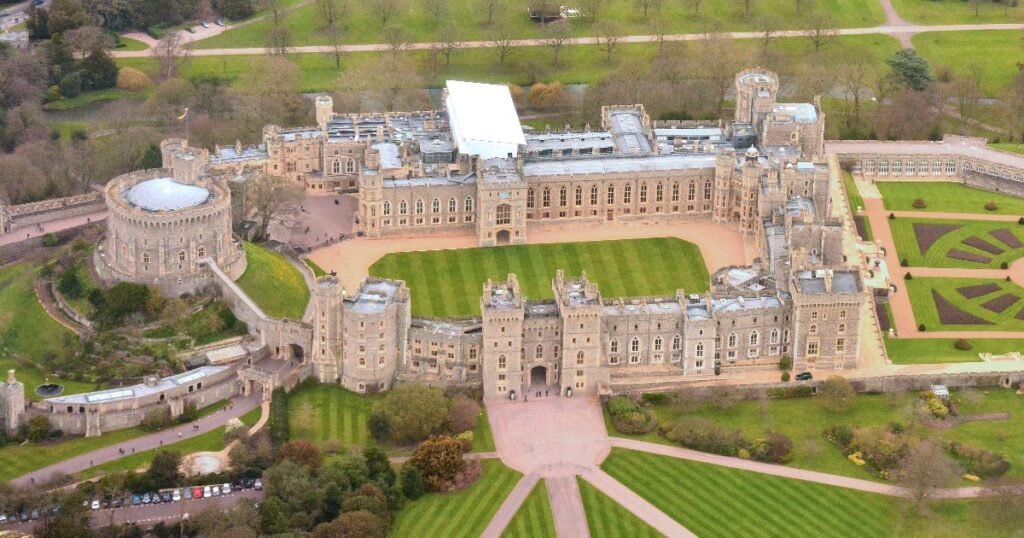
Windsor Castle is the oldest and largest inhabited castle in the world and an official residence of the British monarch. The castle’s grandeur and its association with the royal family make it a must-visit destination.
Historical and Cultural Significance: Founded by William the Conqueror in the 11th century, Windsor Castle has been the site of numerous state events and royal ceremonies. It is also where the Queen spends many of her weekends.
Unique Features: Visitors can tour the lavish State Apartments, view St. George’s Chapel (the resting place of many British monarchs), and witness the Changing of the Guard ceremony.
Best Time to Visit: Visit during the spring and summer months for the best weather and to experience the Changing of the Guard.
Travel Tips:
- Transportation: Windsor is a short train ride from London’s Paddington or Waterloo stations. The town is compact and walkable.
- Accommodation: Consider staying in Windsor or nearby Eton for charming inns and hotels with views of the castle.
- Local Customs: Photography is not allowed inside St. George’s Chapel. Be respectful of the royal family’s privacy when visiting.
10. The Cotswolds, Gloucestershire
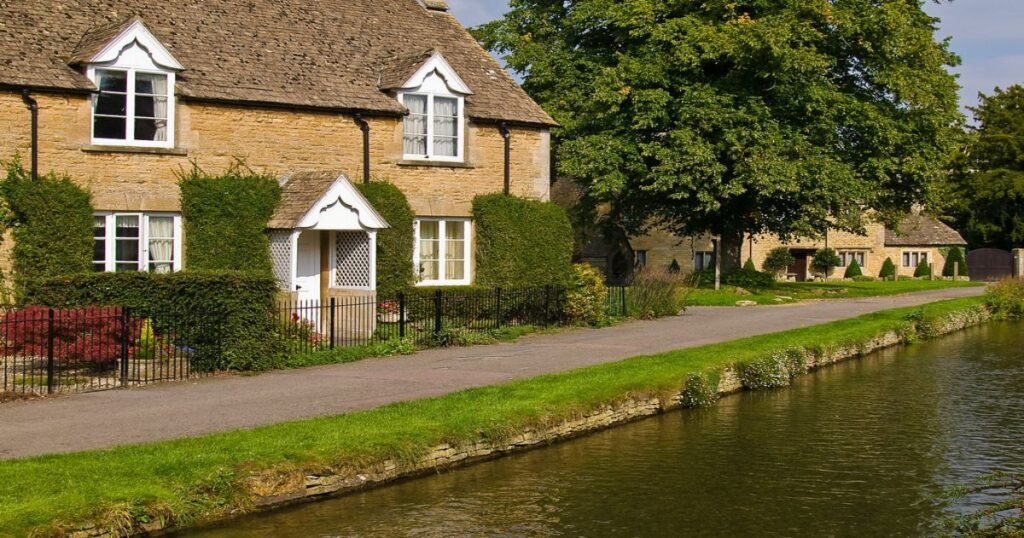
The Cotswolds, an area of outstanding natural beauty, is known for its rolling hills, quaint villages, and honey-colored stone cottages. This region offers a glimpse into traditional English countryside life.
Historical and Cultural Significance: The Cotswolds were historically known for their wool trade, and the wealth from this industry is reflected in the beautiful “wool churches” found throughout the area.
Unique Features: Explore the charming villages of Bourton-on-the-Water, Stow-on-the-Wold, and Bibury, known as the “prettiest village in England.” Enjoy scenic walks or drives through the undulating hills and vibrant meadows.
Best Time to Visit: Visit in spring or summer to see the Cotswolds in full bloom and experience traditional village fairs.
Travel Tips:
- Transportation: The Cotswolds are best explored by car. There are also train and bus services from London and other cities.
- Accommodation: Stay in a country inn or bed-and-breakfast to enjoy the full charm of the area. Many historic manor houses have been converted into boutique hotels.
- Local Customs: When walking in the countryside, always close the gates behind you and follow the “Countryside Code” to protect local wildlife and livestock.
11. Liverpool and The Beatles Story, Liverpool
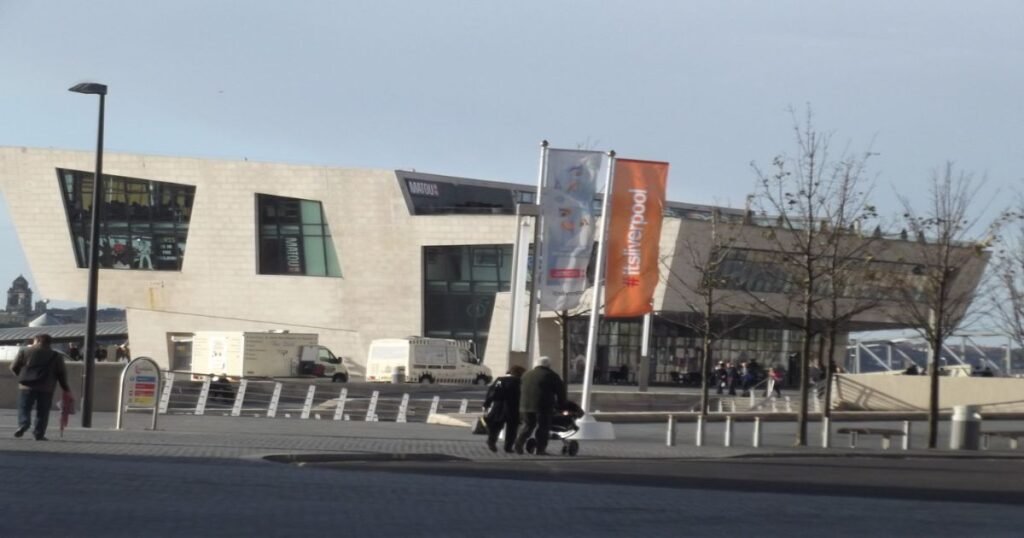
Liverpool is a vibrant city known for its rich maritime history and being the birthplace of The Beatles. With its energetic music scene, diverse cultural offerings, and dynamic waterfront, Liverpool is a must-visit for music lovers and history enthusiasts alike.
Historical and Cultural Significance: Once one of the world’s busiest ports, Liverpool has a proud heritage as a major trading hub. Its significance in British pop culture was solidified with the rise of The Beatles in the 1960s, and the city has been a beacon for music ever since.
Unique Features: Visit The Beatles Story, a museum dedicated to the legendary band, and explore the historic Albert Dock, a UNESCO World Heritage Site.
Best Time to Visit: Visit between April and September to enjoy warmer weather and a variety of cultural festivals.
Travel Tips:
- Transportation: Liverpool is accessible by train from London and Manchester. The city is served by an extensive bus network and taxis are readily available.
- Accommodation: Stay in hotels near the city center or in the historic waterfront area to be close to major attractions.
- Local Customs: Liverpudlians, or “Scousers,” are known for their friendly and welcoming nature. Be sure to respect their love of music and football—topics that are dear to their hearts.
12. Oxford University and the Bodleian Library, Oxford
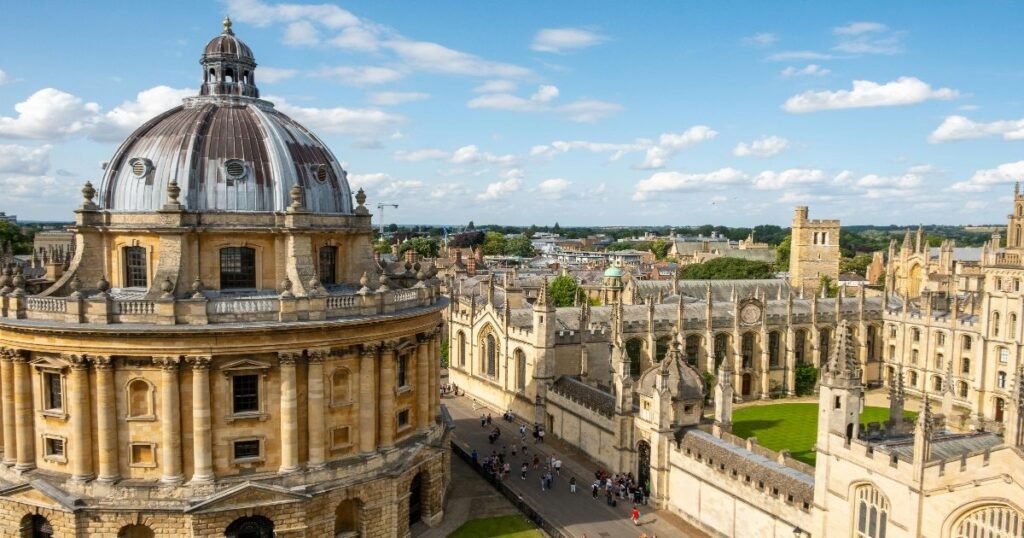
Oxford is home to the oldest university in the English-speaking world and is steeped in a history of academic excellence. The city’s iconic spires, beautiful college buildings, and historic libraries make it a destination of immense intellectual and cultural significance.
Historical and Cultural Significance: The University of Oxford was established in the 12th century and has educated numerous British prime ministers, writers, and scientists. The Bodleian Library, one of the oldest libraries in Europe, holds priceless manuscripts and books dating back hundreds of years.
Unique Features: Explore the university’s historic colleges, visit the impressive Radcliffe Camera, and take a guided tour of the Bodleian Library.
Best Time to Visit: Visit during spring or autumn to experience mild weather and fewer tourists.
Travel Tips:
- Transportation: Oxford is an hour away from London by train or bus. The city is compact and walkable, with many of its attractions located in the city center.
- Accommodation: There are many hotels and guesthouses in Oxford, including the option to stay in university accommodation during the summer months.
- Local Customs: Some college areas may be closed to visitors during exam times. Always check ahead and be mindful of students and faculty while visiting.
13. Canterbury Cathedral, Canterbury
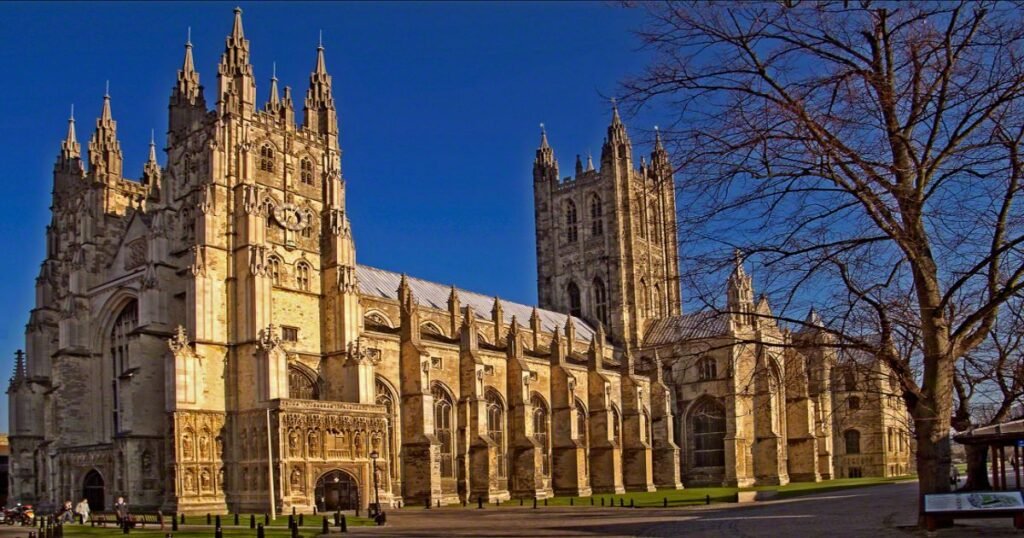
Canterbury Cathedral is one of the oldest and most famous Christian structures in England, attracting pilgrims and visitors for centuries. The cathedral’s stunning architecture and rich history make it a focal point of spiritual and cultural significance.
Historical and Cultural Significance: Founded in 597 AD by St. Augustine, Canterbury Cathedral has been the seat of the Archbishop of Canterbury, the leader of the Church of England, for centuries. The cathedral became a pilgrimage site after the murder of Archbishop Thomas Becket in 1170, an event dramatized by Geoffrey Chaucer in “The Canterbury Tales.”
Unique Features: Marvel at the cathedral’s stunning Gothic architecture, magnificent stained glass windows, and peaceful cloisters. Visit the site of Thomas Becket’s martyrdom and the crypt beneath the main chapel.
Best Time to Visit: The best time to visit is in spring or autumn to enjoy pleasant weather and explore the city of Canterbury.
Travel Tips:
- Transportation: Canterbury is a 60-minute train ride from London. The city’s center is easily walkable, with the cathedral being a short walk from the train station.
- Accommodation: Choose from charming bed-and-breakfasts, boutique hotels, or stay at nearby country inns.
- Local Customs: Respect the sanctity of the cathedral during services. Photography is allowed in some areas, but be mindful not to disrupt others.
14. Hadrian’s Wall, Northumberland
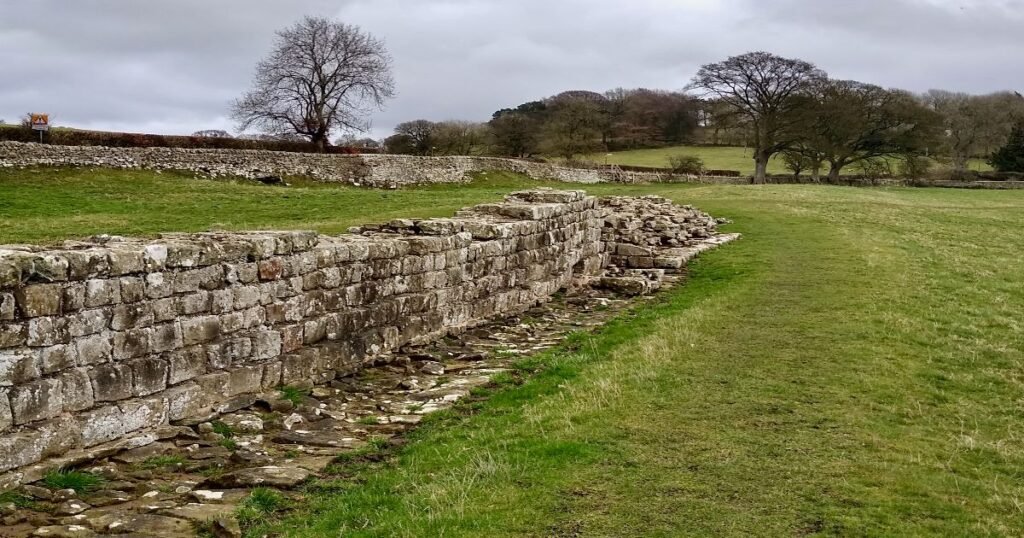
Hadrian’s Wall, a UNESCO World Heritage Site, stretches across Northern England and is a remnant of the Roman Empire’s northern frontier.
Historical and Cultural Significance: Constructed between 122 and 128 AD under the orders of Emperor Hadrian, the wall marked the northern limit of the Roman Empire.
Unique Features: Hike along sections of the wall to experience sweeping views of the English countryside, visit the Roman forts of Vindolanda and Housesteads, and explore museums that showcase artifacts from the Roman era.
Best Time to Visit: Visit during the summer months for ideal hiking conditions and extended daylight.
Travel Tips:
- Transportation: The best way to explore Hadrian’s Wall is by car or organized tour. There are also bus services connecting key sites.
- Accommodation: Stay in nearby towns such as Hexham or Carlisle, which offer a variety of lodging options.
- Local Customs: When hiking, stick to designated paths to protect the fragile landscape and historical sites. Be prepared for changing weather conditions.
15. Snowdonia National Park, Wales
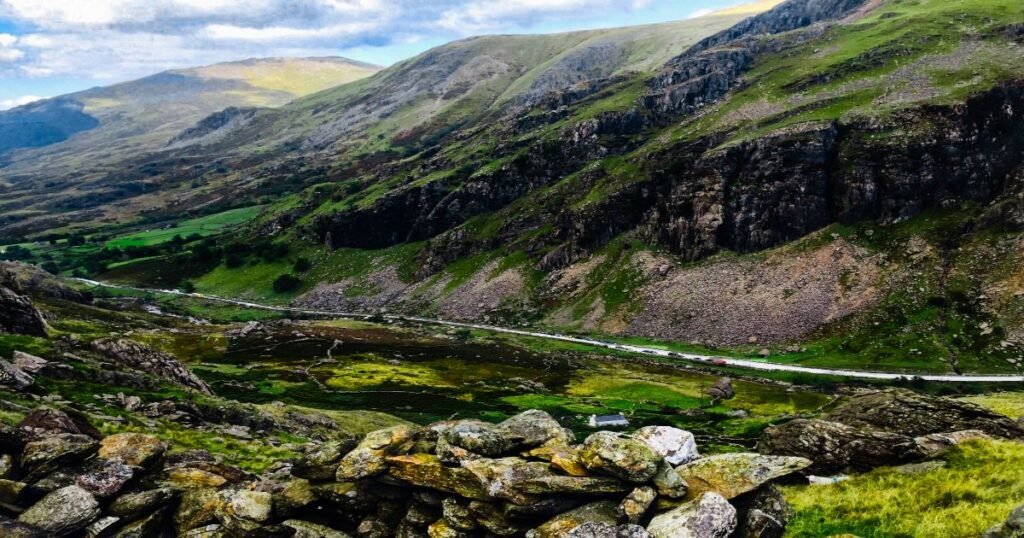
Snowdonia National Park is a breathtaking region of rugged mountains, lush valleys, and tranquil lakes in North Wales. Dominated by Mount Snowdon, the highest peak in Wales, this national park offers endless opportunities for outdoor adventures.
Historical and Cultural Significance: Snowdonia is deeply intertwined with Welsh culture and legend. It is said to be the resting place of the mythical giant Rhitta Gawr, who was defeated by King Arthur.
Unique Features: Climb Mount Snowdon, hike along scenic trails, explore underground mines, and visit the charming villages of Betws-y-Coed and Beddgelert.
Best Time to Visit: Visit in late spring or early autumn for ideal hiking conditions and vibrant foliage.
Travel Tips:
- Transportation: Snowdonia is best explored by car. There are train services to nearby towns such as Betws-y-Coed and Blaenau Ffestiniog.
- Accommodation: Choose from traditional inns, bed-and-breakfasts, or campsites within the national park.
- Local Customs: Be mindful of local farming practices when hiking, and always close the gates behind you. Learn a few basic Welsh phrases as a sign of respect for the local culture.
Also Read: The Best 15 Tourist Attractions In Italy
Conclusion
The United Kingdom is a treasure trove of historical landmarks, cultural gems, and breathtaking natural landscapes.
From the timeless beauty of London’s royal palaces to the rugged peaks of Snowdonia, the UK offers an endless array of experiences for travelers of all tastes.
Whether you’re drawn to the serene countryside, the rich history of its universities and cathedrals, or the vibrant energy of its cities, the UK promises an unforgettable journey through time and culture.
FAQs
1. What is the best time of year to visit the United Kingdom?
The best time to visit the UK is from April to September when the weather is mild, and many attractions are open.
2. Do I need a visa to visit the United Kingdom?
It depends on your nationality. Citizens of some countries can enter visa-free, while others require a visa. Check the UK government website for the latest requirements.
3. What is the best way to travel around the UK?
Trains and buses are convenient for most destinations. Renting a car is recommended for exploring rural areas like the Cotswolds and Hadrian’s Wall.
4. Are there any local customs or etiquette I should be aware of?
The British are known for politeness. Always say “please” and “thank you,” and be mindful of personal space. Queuing is taken seriously, so always wait your turn.
5. Can I visit university colleges in Oxford and Cambridge?
Yes, but some colleges have restricted access during exam periods. Check the individual college websites for visitor information.

